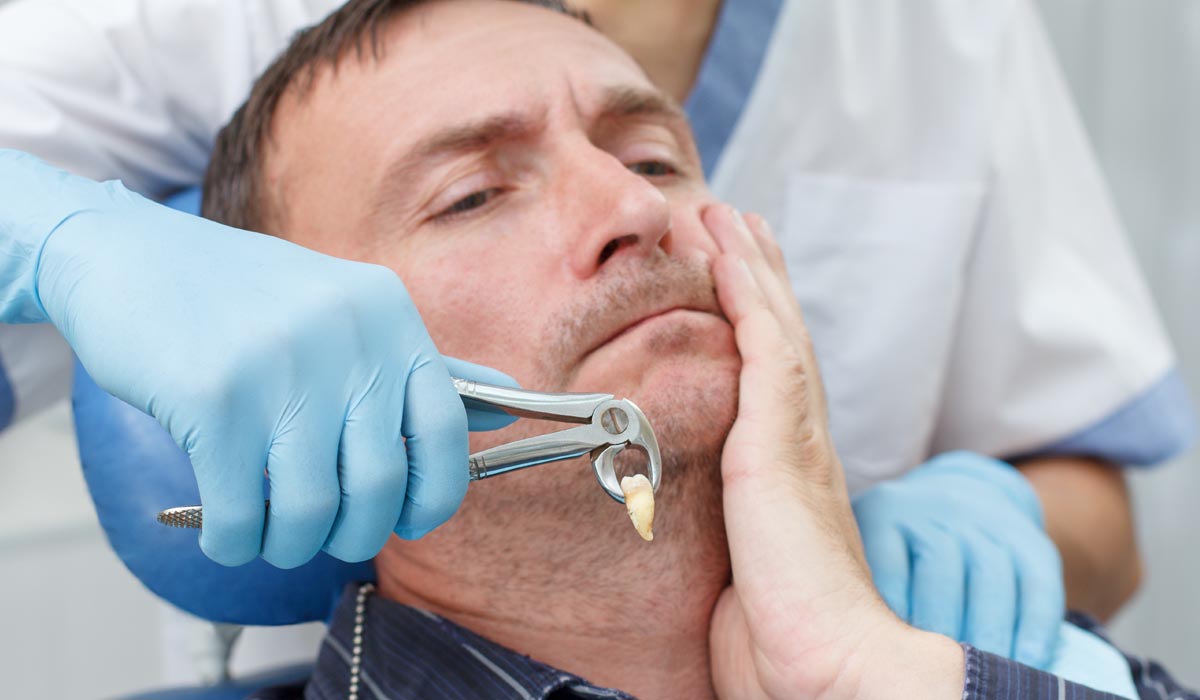How Long to Keep Gauze in after Tooth Extraction? Ensuring proper oral care after a tooth extraction is essential for a smooth recovery. Effective post-extraction care promotes efficient healing and minimizes discomfort.
A key component in this process is gauze, which helps control bleeding and supports the formation of a protective blood clot crucial for healing. Now, let’s explore the details and answer the common question: “How long to keep gauze in after tooth extraction?”
Key Takeaways:
- Gauze is essential for controlling bleeding and forming a protective blood clot after tooth extraction, typically used for 45 minutes to an hour.
- During the initial hours, gauze should be changed every 30 minutes, with minimal talking, eating, or spitting to prevent clot disruption.
- Signs to stop using gauze include reduced bleeding and minimal redness on the pad, as prolonged use may lead to complications.
- Pain and swelling can be managed with cold compresses and over-the-counter pain relievers, while persistent bleeding or severe pain requires dental attention.
- Always consult your dentist for personalized advice and follow post-extraction care instructions for a smooth recovery.

When to Stop Using Gauze After Tooth Extraction:
Let’s have a look at the different phases of using gauze after extracting the tooth:
Initial Phase: First Few Hours
Immediately after tooth extraction, your dentist will provide gauze to manage the initial bleeding. Gauze controls bleeding and encourages the formation of a protective blood clot at the extraction site. Applying gauze promptly after the procedure helps initiate the healing process.
To maximize effectiveness, bite gently on the gauze pad with consistent pressure over the extraction site. Change the gauze every 30 minutes to ensure freshness and continued bleeding control. This careful approach is key to promoting a stable blood clot.
During the initial phase, limit talking, eating, and spitting, as these actions can disturb the clot and hinder healing. Minimizing such activities creates optimal conditions for secure clot formation and a successful recovery.
Monitoring Blood Clot Formation
The blood clot formed at the extraction site is vital for protecting the gums and preventing infections. It acts as a natural barrier, promoting tissue regeneration.
To ensure proper clot formation, periodically check its appearance by gently biting on a clean gauze pad. A healthy clot should appear red or dark red with a firm, jelly-like texture. Some oozing is normal initially, but if bleeding persists or a clot fails to form, contact your dentist promptly.
Avoid disturbing the extraction site with your fingers or tongue, as this can dislodge the clot. Also, refrain from vigorous rinsing or using straws, which may disrupt the clot’s stability.
Duration of Gauze Usage
Generally, gauze should be kept in place for about 45 minutes to an hour post-extraction. During this time, it helps control bleeding and supports the formation of a stable blood clot.
The required gauze duration can vary depending on the complexity of the extraction and individual healing rates. Wisdom teeth removals may necessitate longer gauze use due to the nature of the procedure. Always follow your dentist’s personalized recommendations.
If you remain unsure about how long to use gauze or experience complications, consult your dentist for clarity.
Signs It’s Time to Stop Using Gauze
Key indicators that it’s safe to stop using gauze include reduced bleeding and a cleaner gauze pad upon removal. Once the pad shows minimal redness and oozing decreases, it signals that a protective clot has likely formed.
To safely remove the gauze, gently take it out without disturbing the clot. Avoid frequently checking for bleeding, as patience is essential during this healing phase.
Applying excessive pressure or keeping gauze in longer than recommended will not speed up healing and could cause complications. Adhere to your dentist’s instructions for the best results.
Managing Discomfort and Pain
Discomfort after a tooth extraction is common but manageable. Applying a cold compress to the cheek can reduce swelling and numb the area. Over-the-counter pain relievers like ibuprofen or acetaminophen can also provide relief; however, always follow the recommended dosage.
If prescribed stronger pain medication, be mindful of potential side effects such as drowsiness. Avoid activities like driving until you understand the medication’s effects. Communicate with your dentist about pain levels and any medication concerns.
Potential Complications
While most recoveries are smooth, it’s important to recognize potential complications. Improper gauze handling can lead to prolonged bleeding or, in rare cases, infection. If bleeding persists beyond the initial hours or if severe pain develops, seek professional assistance immediately.
Common issues like dry sockets may require medicated gauze or additional dental treatments. Stay in close communication with your dental care team to ensure a safe and effective recovery.
Conclusion
Gauze is more than just a simple fabric—it’s an essential tool for controlling bleeding and initiating the healing process. Typically, gauze should be used for about an hour after a dental extraction, though this can vary depending on factors like the severity of the procedure and individual healing rates. Adhering to post-extraction care instructions is crucial for a smooth recovery.
It’s important to emphasize the value of consulting your dentist for personalized advice. Your dentist understands your specific case and can provide tailored recommendations. Whether you’re in the initial stages of recovery, ensuring proper blood clot formation, or managing any discomfort, your dental care team is there to support you every step of the way.
Also Read: How to Stop Throbbing Pain after Root Canal



